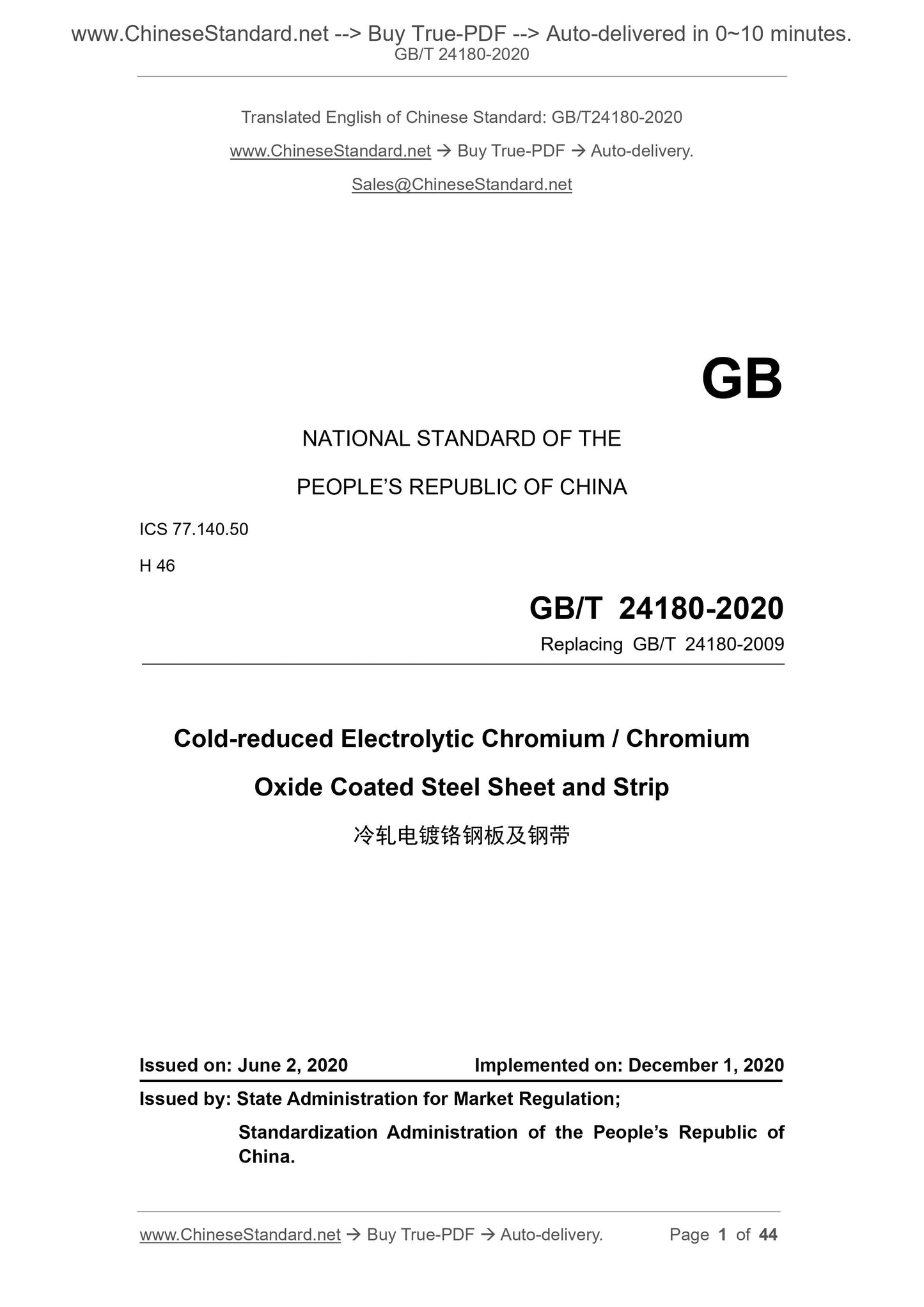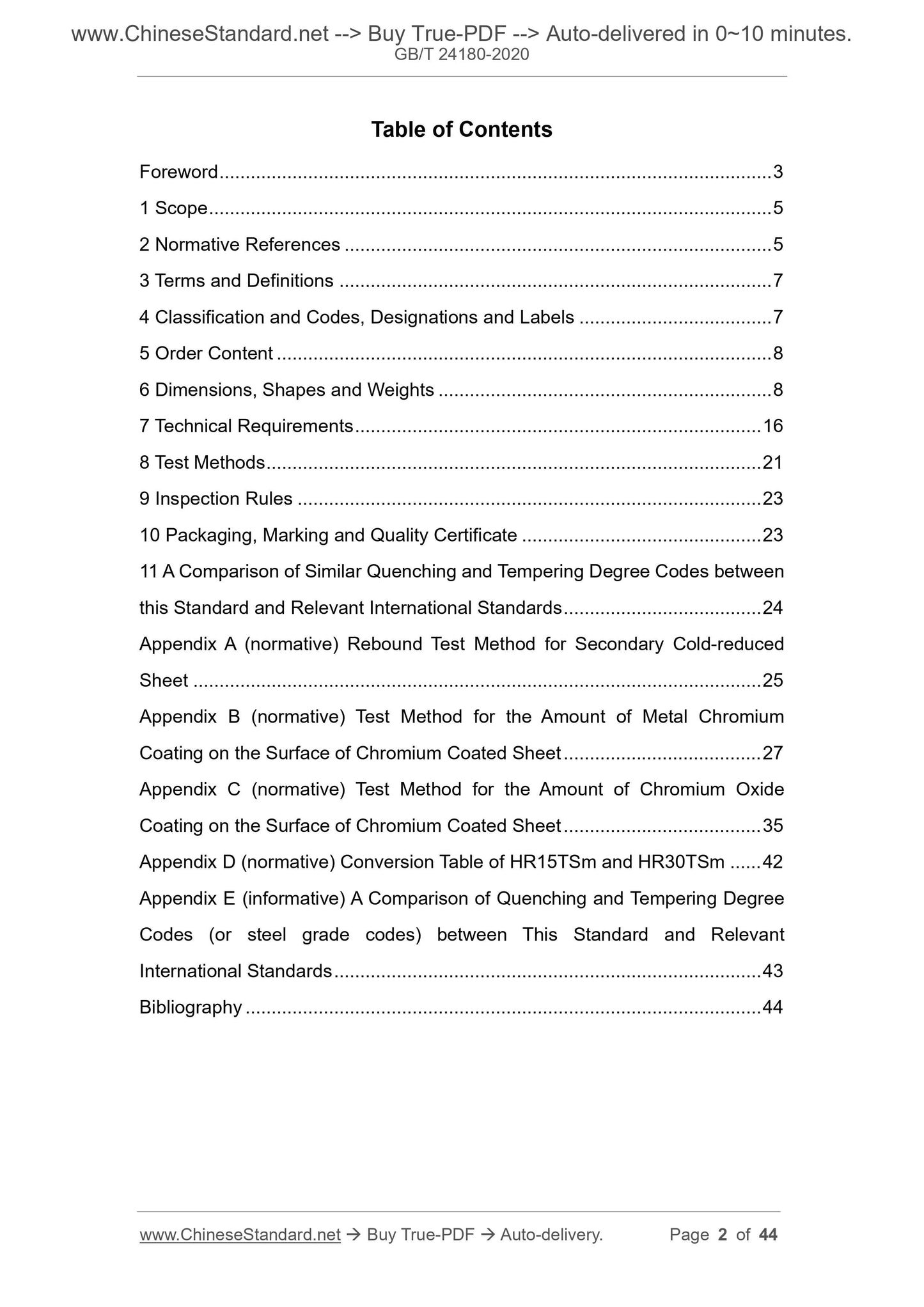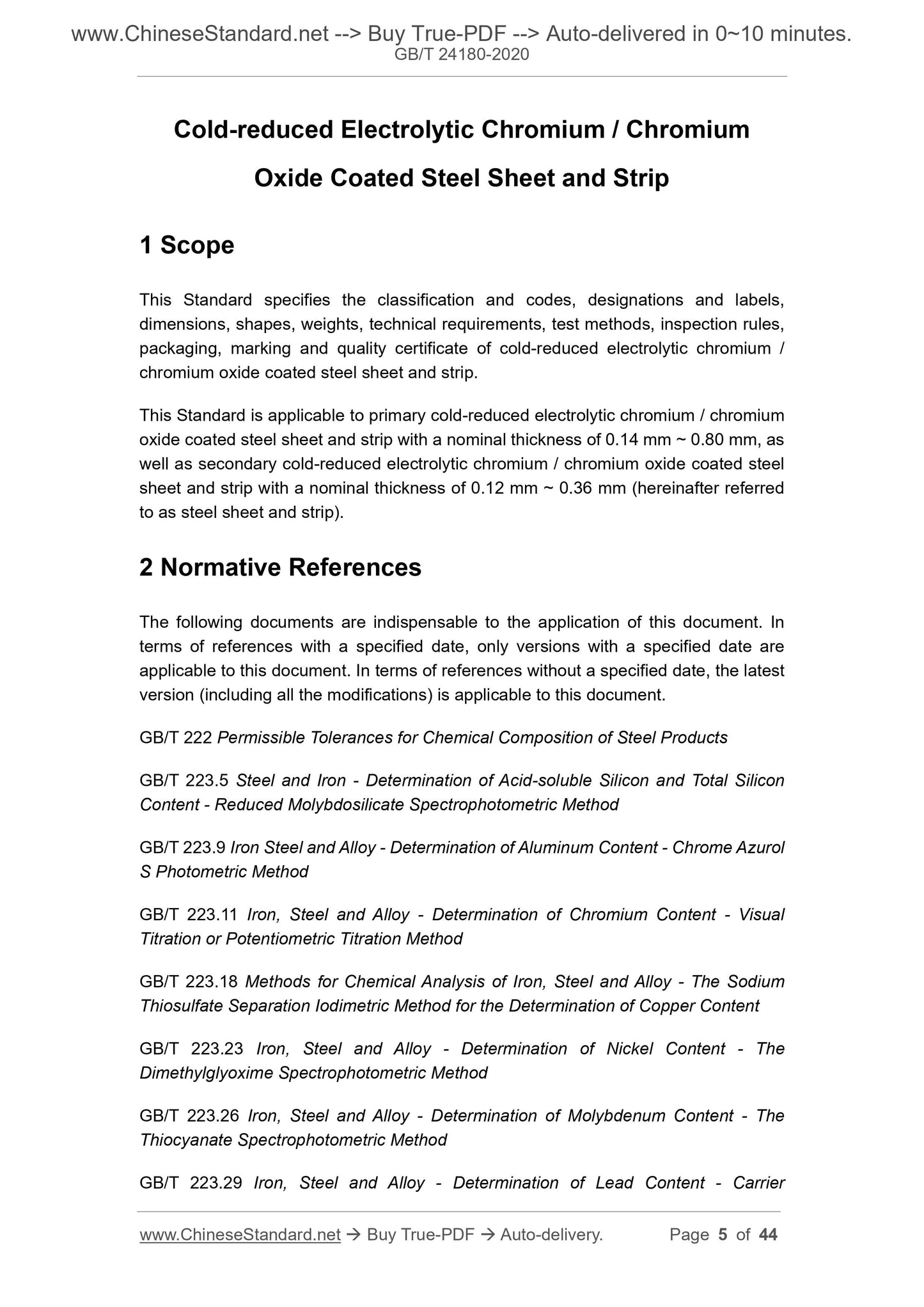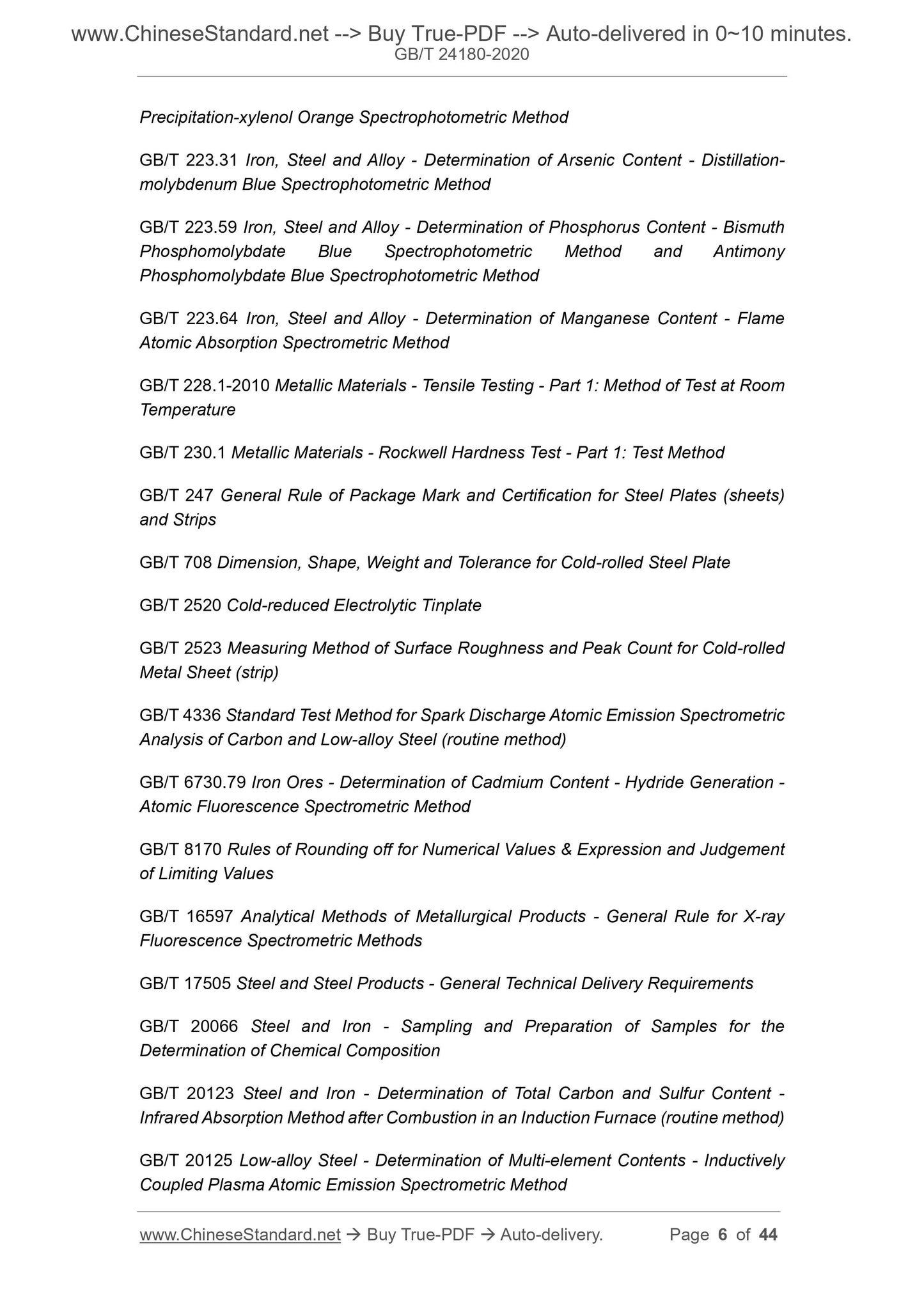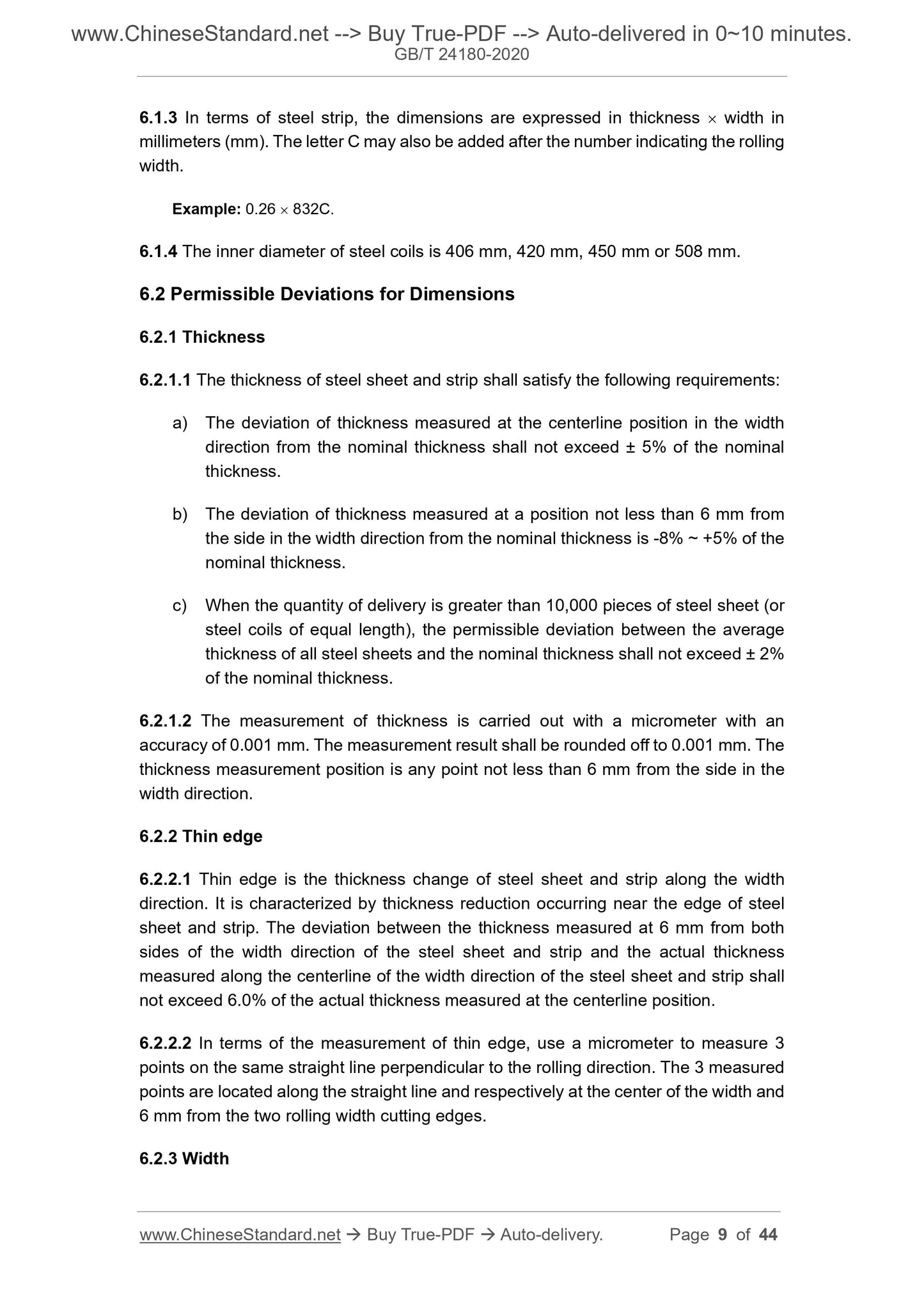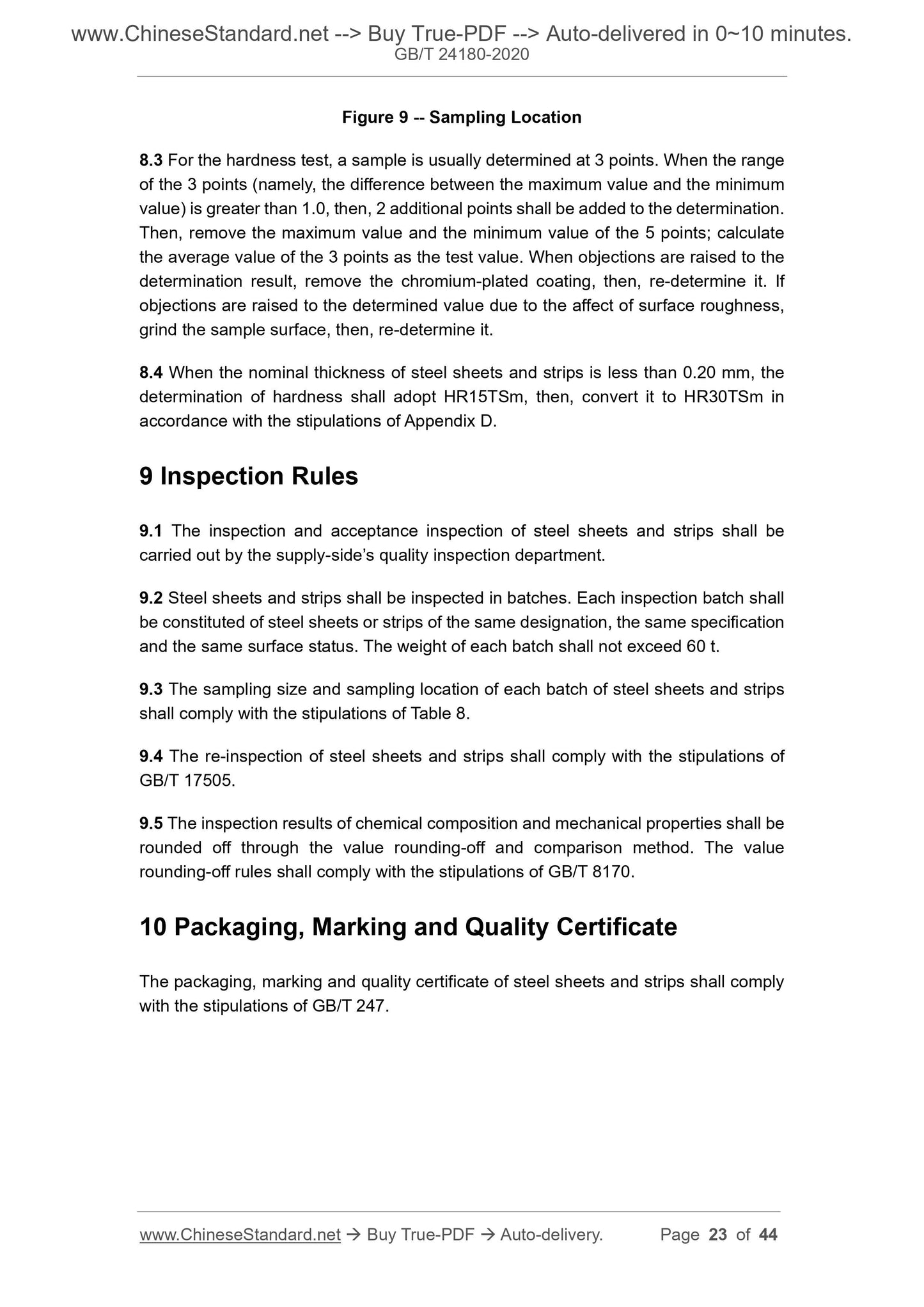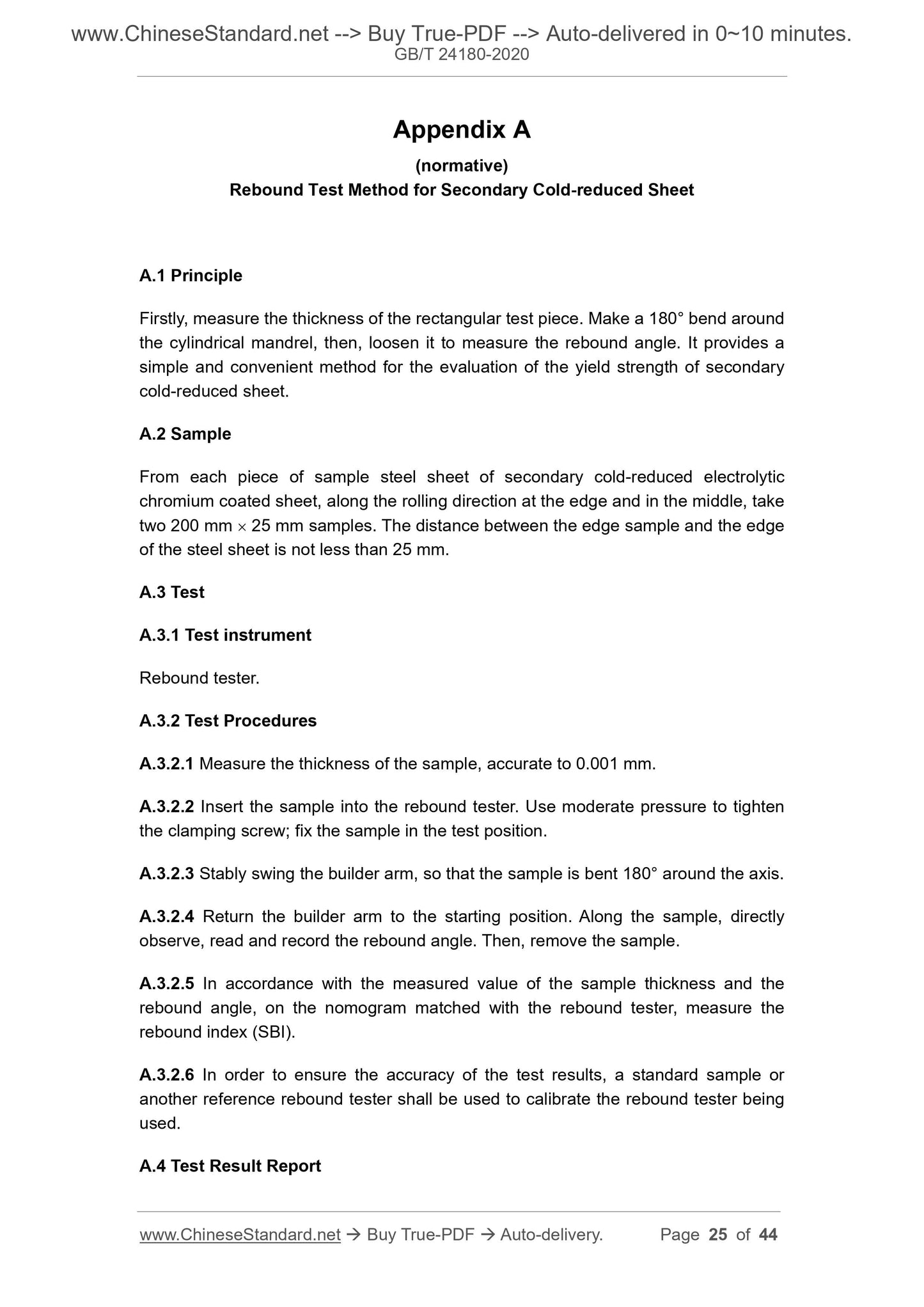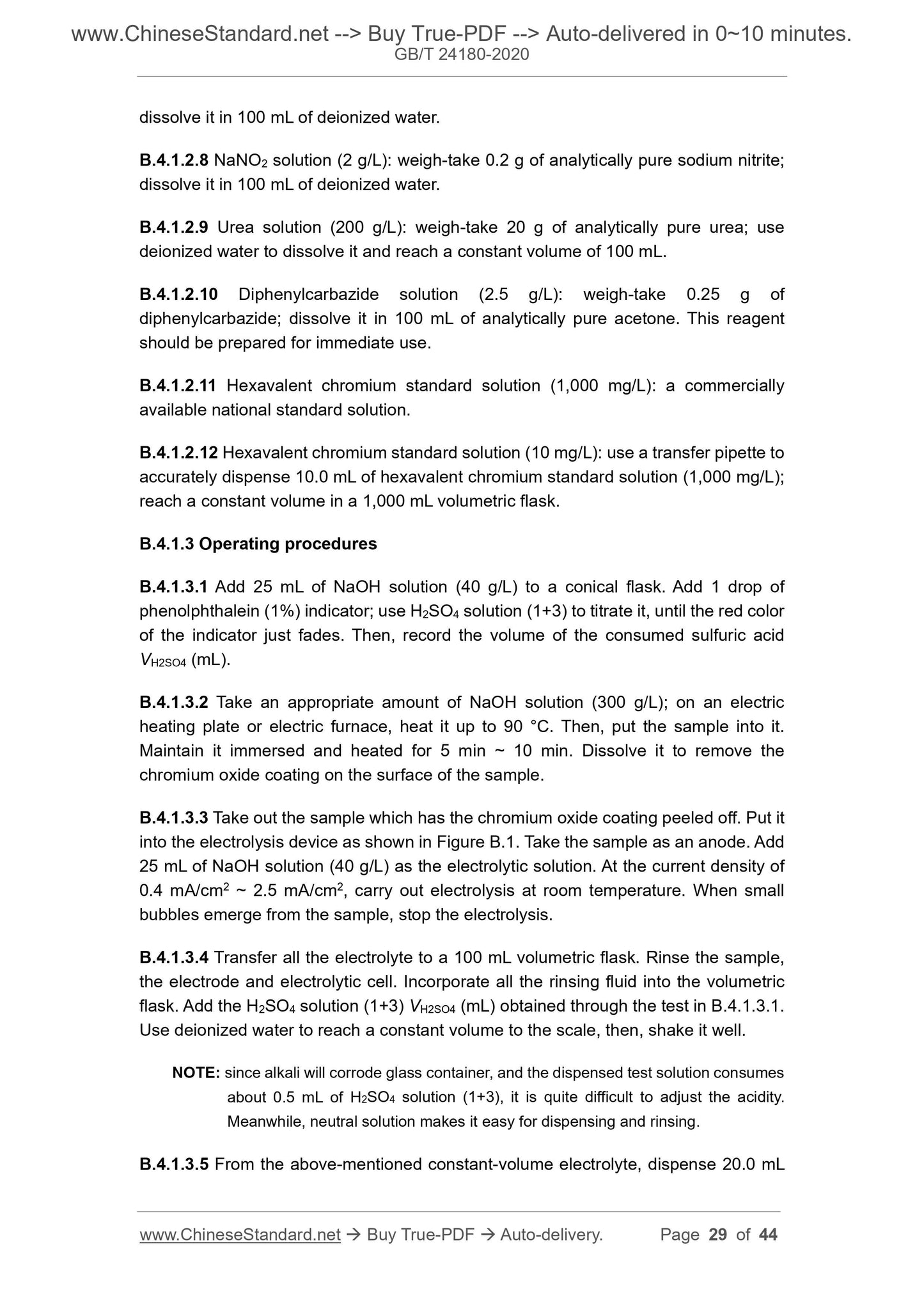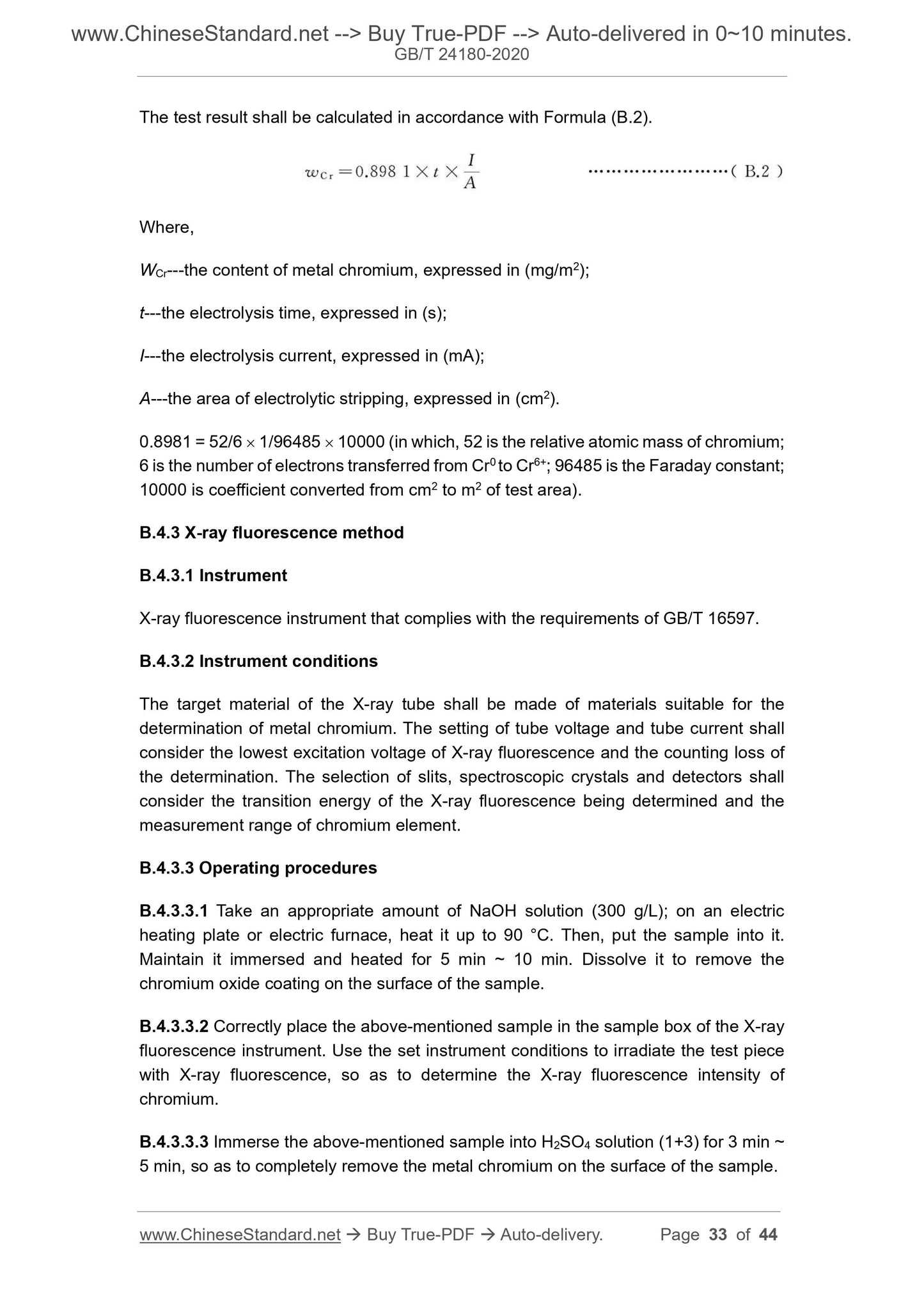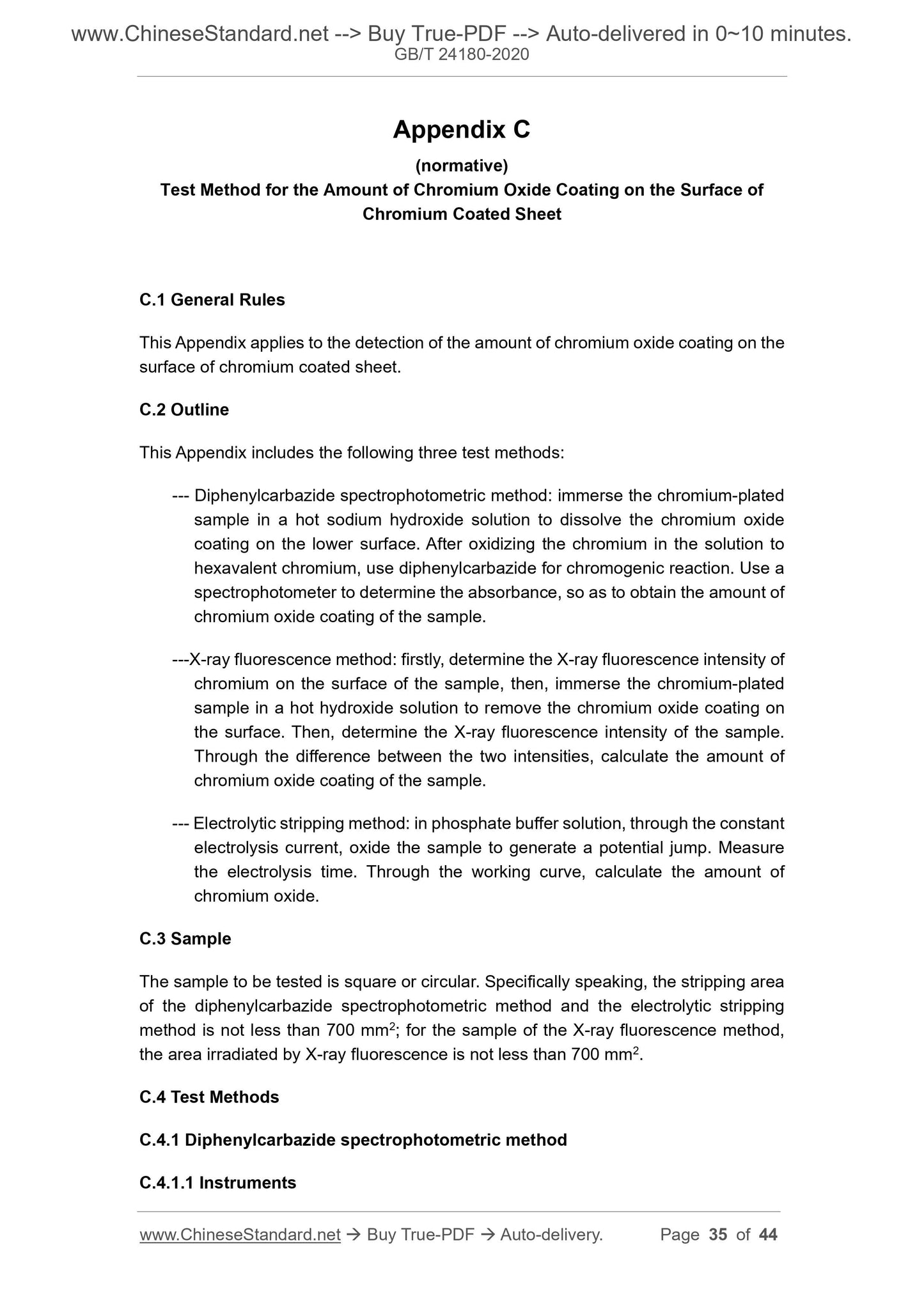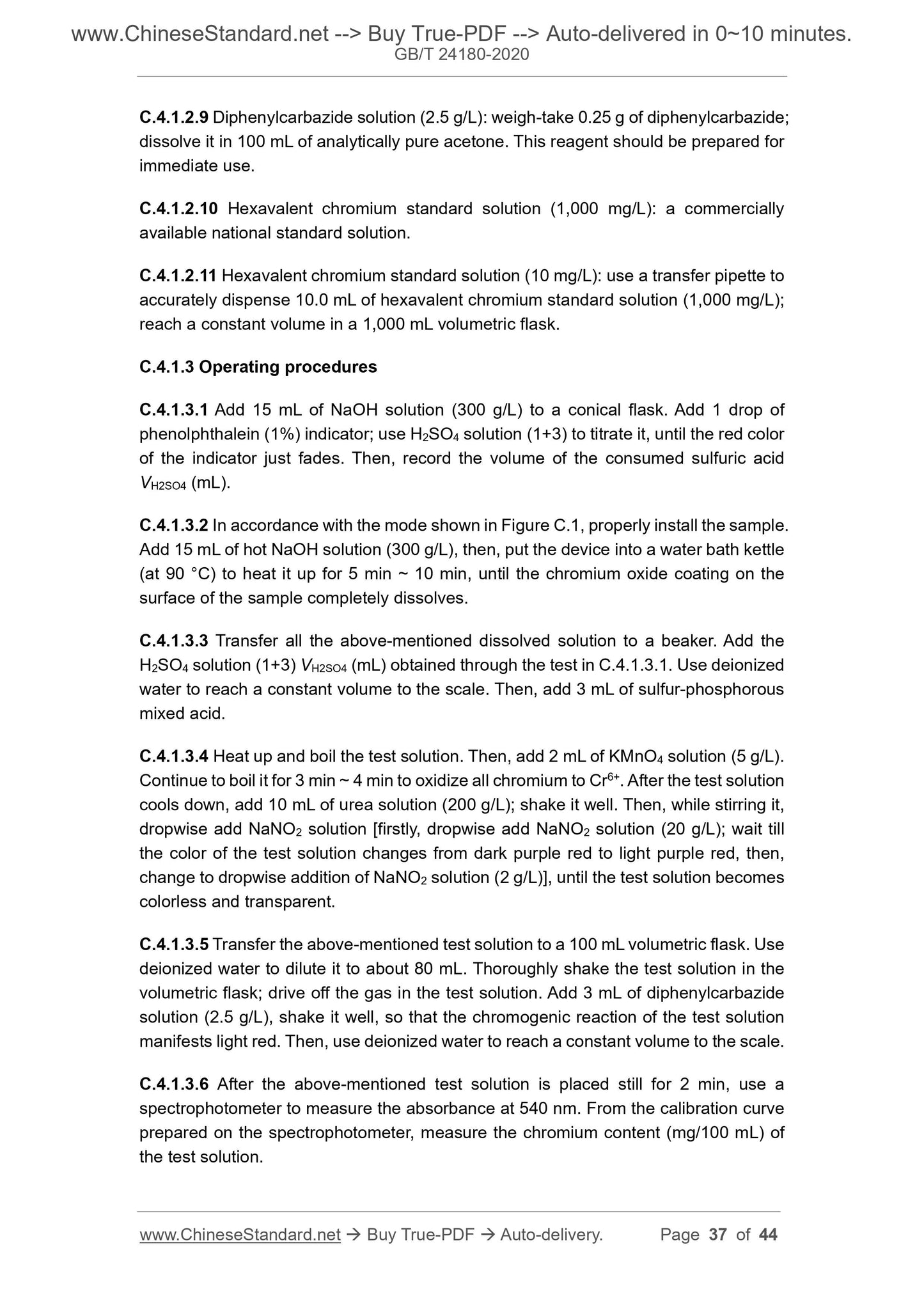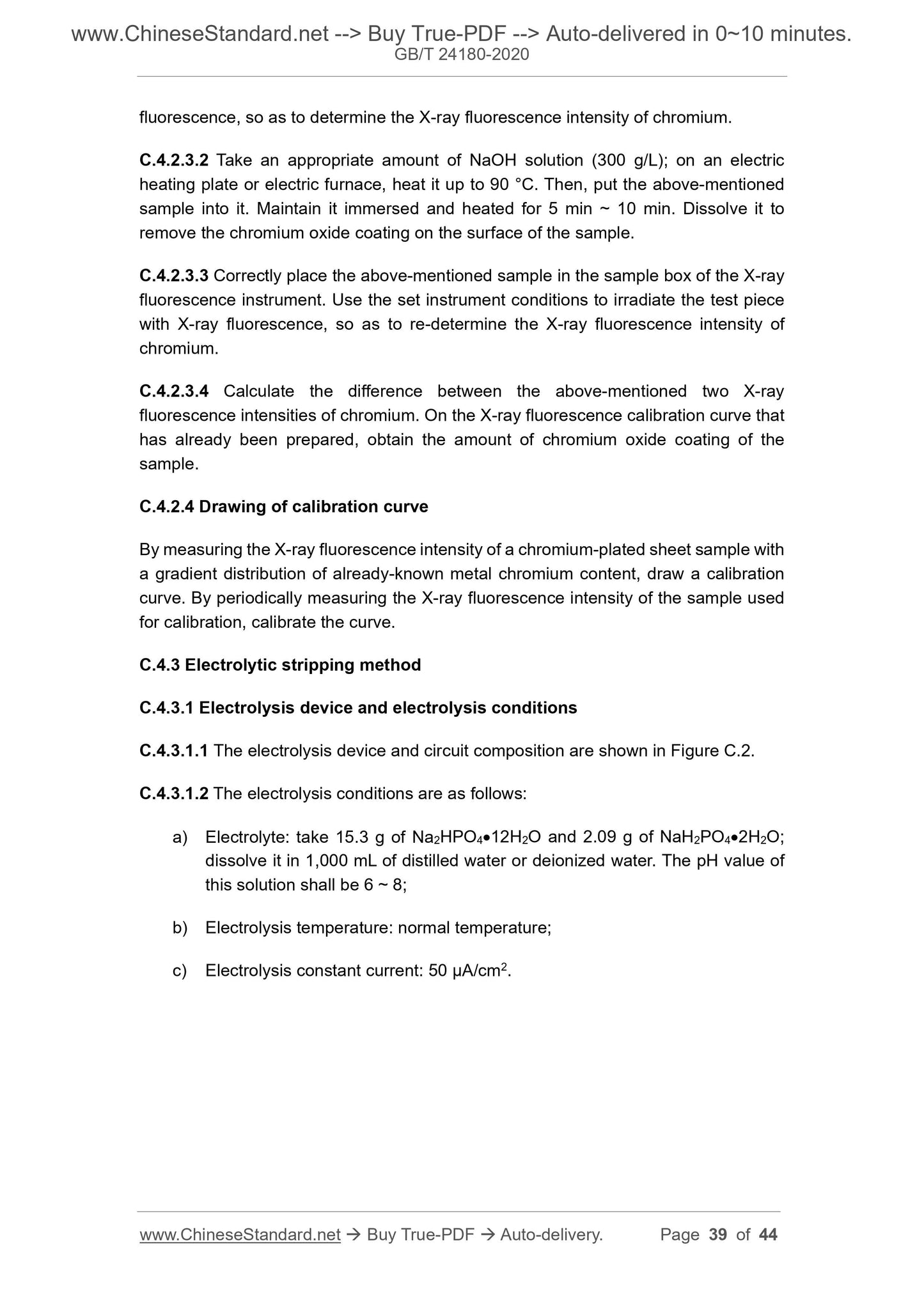1
/
of
12
www.ChineseStandard.us -- Field Test Asia Pte. Ltd.
GB/T 24180-2020 English PDF (GB/T24180-2020)
GB/T 24180-2020 English PDF (GB/T24180-2020)
Regular price
$405.00
Regular price
Sale price
$405.00
Unit price
/
per
Shipping calculated at checkout.
Couldn't load pickup availability
GB/T 24180-2020: Cold-reduced Electrolytic Chromium / Chromium Oxide Coated Steel Sheet and Strip
Delivery: 9 seconds. Download (and Email) true-PDF + Invoice.Get Quotation: Click GB/T 24180-2020 (Self-service in 1-minute)
Newer / historical versions: GB/T 24180-2020
Preview True-PDF
Scope
This Standard specifies the classification and codes, designations and labels,dimensions, shapes, weights, technical requirements, test methods, inspection rules,
packaging, marking and quality certificate of cold-reduced electrolytic chromium /
chromium oxide coated steel sheet and strip.
This Standard is applicable to primary cold-reduced electrolytic chromium / chromium
oxide coated steel sheet and strip with a nominal thickness of 0.14 mm ~ 0.80 mm, as
well as secondary cold-reduced electrolytic chromium / chromium oxide coated steel
sheet and strip with a nominal thickness of 0.12 mm ~ 0.36 mm (hereinafter referred
to as steel sheet and strip).
Basic Data
| Standard ID | GB/T 24180-2020 (GB/T24180-2020) |
| Description (Translated English) | Cold-reduced Electrolytic Chromium / Chromium Oxide Coated Steel Sheet and Strip |
| Sector / Industry | National Standard (Recommended) |
| Classification of Chinese Standard | H46 |
| Classification of International Standard | 77.140.50 |
| Word Count Estimation | 30,339 |
| Date of Issue | 2020-06-02 |
| Date of Implementation | 2020-12-01 |
| Issuing agency(ies) | State Administration for Market Regulation, China National Standardization Administration |
Share
